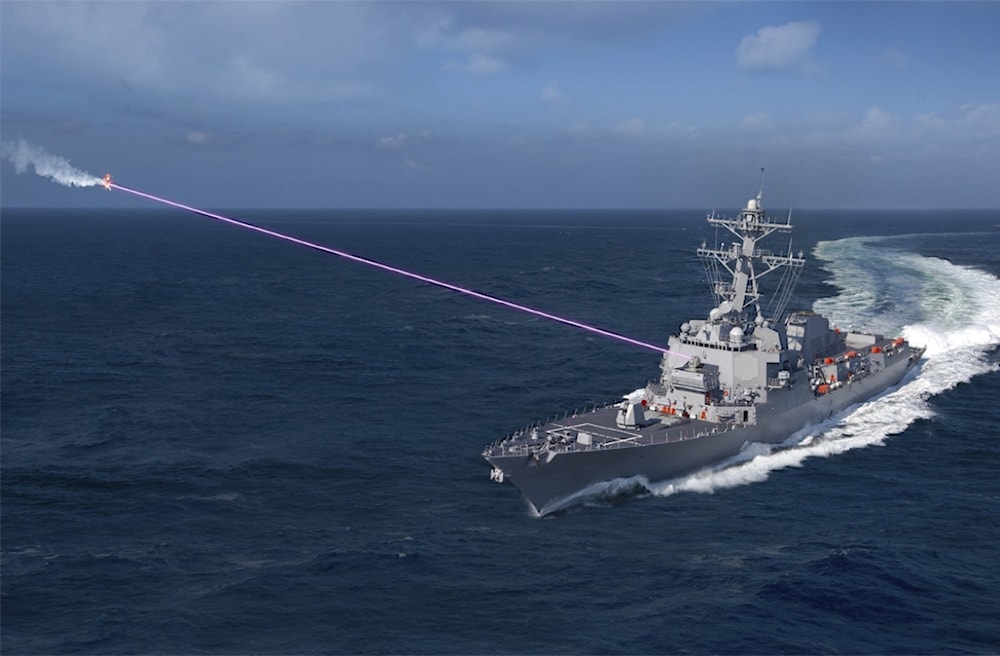US lagging in directed energy weapons race: US Senator
National Defense Industrial Association and the Emerging Technologies Institute criticized the Biden administration and the Department of Defense for failing to provide clear direction and leadership for the development of Directed Energy Weapon systems.
-

Artist’s concept of a HELIOS laser system aboard a US destroyer (Lockheed Martin Image)
Independent Senator Angus King delivered a stark warning during a US Senate Armed Services Committee hearing on Tuesday, stating that the United States has already lost or is badly losing the race to develop hypersonic and directed energy weapons to its adversaries.
"We are woefully behind on the issue of directed energy," remarked Senator King. "On hypersonics and directed energy, we have lost the race or we are badly losing the race. We have a lot of catching up to do. This should be a hair-on-fire catching-up priority."
Senator King also highlighted the concerning scenario in the Red Sea, where the US Navy is compelled to use multi-million dollar missiles to intercept inexpensive drones launched by Ansar Allah in Yemen, costing less than 1% of the price of the US missile systems.
"The missiles we are using are costing $2 million to $4 million each. That is like using a howitzer to shoot a duck," added Senator King.
In a simultaneous development, a new report from the National Defense Industrial Association (NDIA) and the Emerging Technologies Institute (ETI) criticized the Biden administration and the Department of Defense for failing to provide clear direction and leadership for the development of Directed Energy Weapon (DEW) systems. The report stated that the lack of guidance hinders the ability of US businesses and industry to produce such weapons in the foreseeable future.
"Without a clear and sustained demand signal from DoD, and therefore a return on investment, the industry is hesitant to make the investments necessary to have secure, healthy, and resilient DEW supply chains," noted the report.
The report further accused the Defense Department of wavering in its commitment to fielding DEWs at scale, highlighting that current DEW supply chains are incapable of supporting deployment on a large scale and can only produce small quantities with long lead times.
To address these vulnerabilities, the report recommended a series of concrete steps by the US government, industry, and academia, emphasizing the formidable task ahead in bolstering the nation's capabilities in hypersonic and directed energy technologies.
Read more: Warn, track, target hypersonic threats: Raytheon's new $250mln deal
US falls behind Russia, China hypersonic race
Last year, The National Interest highlighted the weakness of the US in developing offensive hypersonic weapons, as well as in confronting them.
According to the outlet, the United States urgently needs to develop and deploy both offensive and defensive hypersonic weapons capabilities, because it is falling behind as China and Russia have both tested and deployed hypersonic missiles, while the United States is conducting its first successful hypersonic missile test in December 2022.
However, the US has not deployed any hypersonic weapons to date, and the existing US missile defense systems are not yet capable of shooting down adversaries' hypersonic weapons, leaving the US highly vulnerable at this time, NI wrote.

 3 Min Read
3 Min Read








